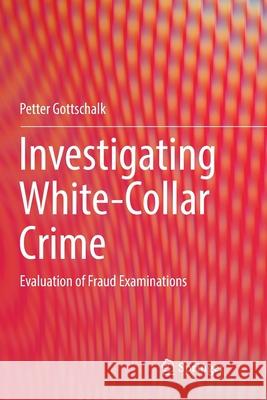Investigating White-Collar Crime: Evaluation of Fraud Examinations » książka
topmenu
Investigating White-Collar Crime: Evaluation of Fraud Examinations
ISBN-13: 9783319886817 / Angielski / Miękka / 2018 / 265 str.
Kategorie:
Kategorie BISAC:
Wydawca:
Springer
Język:
Angielski
ISBN-13:
9783319886817
Rok wydania:
2018
Wydanie:
Softcover Repri
Ilość stron:
265
Waga:
0.39 kg
Wymiary:
23.39 x 15.6 x 1.5
Oprawa:
Miękka
Wolumenów:
01
Dodatkowe informacje:
Wydanie ilustrowane











